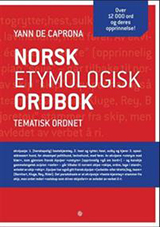'The Fifth Child'
by Doris Lessing
Resources
 = Compulsory
“'The Fifth Child' is the story of a couple in early 1970s Britain who decide to go against the conventions of the times and have a large family. The babies come sooner and faster than they expect, but not until the arrival of Ben, the fifth child, do they have serious reason to regret their decision.”
Source: Amy C. Rea
 "Near the end of The Fifth Child, a despairing Harriet worries about what will happen to Ben when he grows up: "Could Ben, even now, end up sacrificed to science? What would they do with him? Carve him up? Examine those cudgel-like bones of his, those eyes, and find out why his speech was so thick and awkward? If this did not happen--and her experience with him until now said it was unlikely--then what she foresaw for him was even worse."
"Near the end of The Fifth Child, a despairing Harriet worries about what will happen to Ben when he grows up: "Could Ben, even now, end up sacrificed to science? What would they do with him? Carve him up? Examine those cudgel-like bones of his, those eyes, and find out why his speech was so thick and awkward? If this did not happen--and her experience with him until now said it was unlikely--then what she foresaw for him was even worse."
Harriet's fears turn out to be well justified. Ben, in the World begins when Ben is 18, though he looks like a beaten 40. He has been trying to live quietly away from the family that rejected him. As the monster in Frankenstein is befriended by another cultural outsider, a blind man, so Ben is befriended by an old woman living on the margins. When the old woman dies, Ben is first pursued by a manipulative filmmaker who wants to make him the star of a freak movie, then by a cold-hearted scientist who wants to study him to death. The close-focus domestic critique of The Fifth Child opens out to an international adventure story as Ben is whisked away to the south of France, Brazil, and finally the Andes. The remoteness of this last landscape is like the Arctic setting in which the frame narrator of Frankenstein first meets the possessed Dr. Frankenstein in pursuit of his Monster. Doris Lessing's doctor is a career-hungry American who is willing to trample ancient Andean culture, perform experiments that genetically deform animals, and cage Ben up like a monkey.
At the end of Frankenstein, the monster kills his creator and tells the shocked narrator about the suffering he has endured. Despite the bleakness of his early life, the monster gets revenge and a witness to it. The end of Lessing's Ben is, in contrast, utterly hopeless. In both of Lessing's books, the character of Ben is primarily symbolic. In The Fifth Child, he is a devil baby who provides a perversely satisfying service in making this smug family fall apart. In Ben, in the World, he represents all losers and misfits who become prey for selfish others. Doris Lessing suggests that the lives Ben and others like him might lead in this selfish, godless century are bleak. The only mercy they can count on is in death.
Source:
Rebecca Brown
Preparation)
1)
Read the novel "The Fifth Child" by Doris Lessing thoroughly before you go any further!
2)
Read the story about Icarus, and be sure to understand the real meaning of the term "hubris" (Greek: hybris).
3)
There are strong elements of something medieval and supernatural in "The Fifth Child" which create much of the same athmosphere as a Gothic novel.
Do read the two introductions to Gothic fiction below!
Introduction to Gothic fiction:
"A type of novel or romance popular in the late 18th and early 19th century. The word "Gothic" had come to mean 'wild', 'barbarous' and 'crude', qualities which writers found it attractive to cultivate in reaction against the sedate neoclassicism of earlier 18th century culture. Gothic novels were usually set in the past(most often the medieval past) and in foreign countries; they took place in monasteries, castles dungeons and mountainous landscapes. The plots hinged on suspense and mystery, involving the fantastic and the supernatural."
Source: "The Cambridge guide to Literature in English"
"...Gothic writing emerges at a particular and definable stage in the development of class relations: we may define this as the stage when the bourgeoisie, having to all intents and purposes gained social power, began to try to understand the conditions and history of their own ascent. This, surely, is the reason for the emphasis in the literature on recapturing history, on forming history into patterns which are capable of explaining present situations.... The coming of industry, the move towards the city, the regularization of patterns of labour in the late eighteenth century, set up a world in which older, 'natural' ways of governing the individual life--the seasons, the weather, simple laws of exchange—become increasingly as parts of a greater, less easily comprehended whole. The individual comes to see himself at the mercy of forces which in fundamental ways elude his understanding. Under such circumstances, it is hardly surprising to find the emergence of a literature whose key motifs are paranoia, manipulation and injustice, and whose central project is understanding the inexplicable, the taboo, the irrational."
Source: David Punter, The Literature of Terror (London: Longman, 1980).
4)
"Elements of the Gothic novel" by Robert Harris is a splendid summing-up of the main elements of Gothic fiction.
Can you find some of these elements in "The Fifth Child"? Explain!
Introduction)
Your group of students has been asked to prepare an oral presentation of the novel "The Fifth Child" by Doris Lessing. You are allowed to use keywords during the presentation, and you have access to the internet as well as Powerpoint.
Task 1)
During the presentation you are supposed to delve into the traditional aspects of theme, motif, setting, point-of-view, character description and style, etc. However, your audience will also expect an in-depth analysis of the novel as a modern example of Gothic fiction as well as a very generalized interpretation of the theme based on the ancient Greek attitude to hubris and its fatal consequences.
You decide to share the responsibility of the presentation among the members of the group, and your first task will be to specify the duties of each of the team-members.
Below is a suggested outline of the final presentation:
- Introduction (about the author and a short presentation of the novel)
- Theme(s)
- Setting and context
- Point-of-viewt
- Plot summary
- Style and tone
- Characters and character analysis
- The group's opinion(s) with regard to the thematic relevance
Task 2)
As it is important to have a common thematic platform, you have a meeting where you discuss possible thematic approaches. In order to clarify the most important aspects of the novel you decide to write a book review. This review should be a 150-word synopsis of the novel that mentions major themes.
One of the group members should get the responsibility to organize the review, which must be commented on and discussed by everybody before it is finalized and handed in to your teacher.
Task 3)
Once again this is your time to get really creative! You'll need some comic strips or paintings to illustrate the themes you have presented above as well as your individual manuscrips mentioned below. When searcing for these do remember that they should deal with significant themes, events or symbols from the novel.
Some useful sites:
Google Pictures
YouTube
Daryl Cagle's professional cartoonists index
Animation Factory
Pictures
Photographs 1 and Photographs 2
Task 4)
Prepare your part of the oral presentation by writing a very concentrated manuscript illustrated by the comic stip(s) or painting(s) found in task 3.
Your presentation should merely be an outline of maximum 1 x A4 page.
A copy must be handed in to your teacher for comments before the oral presentation takes place.
Evaluation)
In the auditorium you will be rewarded for a well-prepared and free (not bound by your manuscript) presentation of your part of the work. During your presentation you should not worry too much about grammar and other formal conditions, but concentrate on being communicative with your audience.
The over-all impression of the presentation is important!
oppdatert 26.02.2018
Page visited
18566 times
Totalt:
|
|
|
Dette nettstedet er organisert av VGSkole.no som en ressursbase for elever i videregående skole
This site is designed and created by VGSkole.no for educational purposes
Kontaktinfo
|
|
|
|
|
|
|
|
|
|
|
|
|
|
|
|
|
|
|
|
|
|
|
|
|
|


|

 "Near the end of The Fifth Child, a despairing Harriet worries about what will happen to Ben when he grows up: "Could Ben, even now, end up sacrificed to science? What would they do with him? Carve him up? Examine those cudgel-like bones of his, those eyes, and find out why his speech was so thick and awkward? If this did not happen--and her experience with him until now said it was unlikely--then what she foresaw for him was even worse."
"Near the end of The Fifth Child, a despairing Harriet worries about what will happen to Ben when he grows up: "Could Ben, even now, end up sacrificed to science? What would they do with him? Carve him up? Examine those cudgel-like bones of his, those eyes, and find out why his speech was so thick and awkward? If this did not happen--and her experience with him until now said it was unlikely--then what she foresaw for him was even worse."

